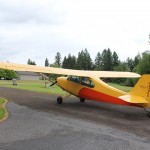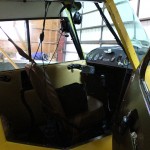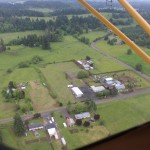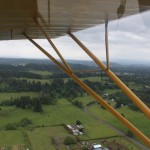When asked by someone how much money flying takes:
Why, all of it!
— Gordon Baxter
People often get a concerned expression when I tell them I fly helicopters and planes. Even if they don’t outright ask it, you can see the question in the look on their face. “Isn’t that dangerous?” Inevitably, the second question is always “Isn’t that expensive?” I’d like to share a small story from my training that demonstrates why the answer to the first question is “no,” the second question is “yes,” and how they are tied together.
With nearly thirty helicopters at the flight school, it was relatively common to be switched to a different ship for maintenance reasons. Sometimes there would be minor discrepancies that could wait until the next down-time to be repaired. In this case a restrictions would be placed on the helicopter to ensure it remained safe and legal. A common one was a “day only” restriction for burned out lights.
On one particular flight, the dispatch board simply said “Dual Only.” This could mean any number of things, but was no concern for me since I was flying with an instructor. I was surprised to find during the preflight that the reason it had been restricted was a missing foam hand grip on the pilot’s cyclic control. Why in the world would a $10 piece of foam ground an aircraft? (Let’s be realistic. It’s probably $65 from the factory because it is “aviation grade” foam.)
It wasn’t until we began the start-up procedure that it became apparent. During start-up and other ground operations, you sometimes clamp the cyclic stick between your thighs to keep it from moving. Without the foam grip, the bare metal was too slippery to securely hold in place. Worst case, a gust of wind could grab the disk and chop off the tail. The solution was to have your crew (the instructor) take the controls while you took care of other tasks.
If something as simple as this can affect the airworthiness of a $300K machine, how can it possibly be safe with all the complicated systems involved? The answer is simple. The level of detail and care shown by the maintenance department and dispatchers is systematic from the engine and transmission, all the way down to the yaw string (aviation grade yarn: $78). Inspections are carried out religiously. Parts are replaced as soon as they are out of tolerance, not just when they start causing problems. Some of them have a “use by” date and are replaced even if they have sat in the hangar with 0 hours on the tach.
This is the same reason that 70 year old airplanes are routinely still flown, while my 12 year old Honda Civic is starting to feel like a rattletrap. Much like Theseus’ Ship, so many parts have been replaced and upgraded over the years it can be left to the philosophers to debate whether it is even the same aircraft. If I took care of my car the same way I would an aircraft, it would drive like new too.
Of course this dedication to safety comes at a cost, and that cost is money. The parts are initially designed and tested to a high degree of reliable and to have a large margin of safety. The acquisition cost is correspondingly greater than an equivalent part in the automotive industry for instance. When you start adding on the regular inspections, replacements, time, and well-intentioned safety regulations the answer is “yes, it is very expensive.”
It takes a special sort of crazy to think it is a good idea to spend your hard earned money drilling holes in the sky, but that same obsession allows us to see the elegance of the machines we fly. Everything in a plane is there for a reason. When you strap in, the only thing on your mind is the flight. There is little room for baggage of the physical, or mental varieties. Flying is a consequence of mechanical refinement, crystalline mental clarity, and the call of the heavens. It’s the best “high” you can get.




